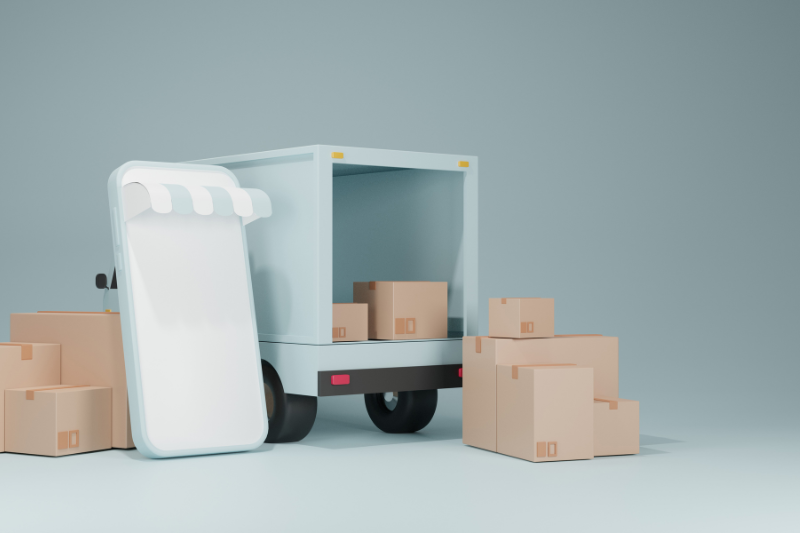Introduction
If you are a seller or a buyer on Facebook Marketplace, you might be wondering who pays for shipping in Facebook Marketplace. Shipping is an important factor to consider when buying or selling items online, as it affects the cost, convenience, and satisfaction of both parties. In this blog post, we will explain how shipping works in Facebook Marketplace in 2024, and share some tips and best practices to make the most of it.
How Shipping Works in Facebook Marketplace
Facebook Marketplace is an online platform that allows users to buy and sell new or pre-loved items with other people in their area or across the country. It is similar to other classified ads websites, such as Craigslist or Gumtree, but with a more social touch. Users can easily communicate with the buyer or seller through Facebook Messenger and check out their Facebook profile.
Facebook Marketplace offers two main delivery methods for buyers and sellers: local pickup and shipping. Local pickup means that the buyer and seller arrange to meet in person and exchange the item and payment. Shipping means that the seller sends the item to the buyer through a courier service and receives the payment online.
Local pickup is the default and preferred delivery method for most items on Facebook Marketplace, as it is free, fast, and convenient for both parties. However, shipping is also available for some items, especially those that are small, lightweight, and easy to ship, such as clothing, accessories, books, or electronics. Shipping is also useful for buyers and sellers who are located far away from each other, or who prefer not to meet in person for safety or convenience reasons.
To use shipping on Facebook Marketplace, the seller needs to enable the shipping option when creating the listing, and provide the weight and dimensions of the item. The seller can also choose to offer free shipping or charge a flat rate or a calculated rate based on the item’s weight and size. The buyer can then see the shipping cost and delivery time when viewing the listing, and choose to buy the item with shipping or local pickup.
When the buyer chooses to buy the item with shipping, the seller receives a notification and a prepaid shipping label from Facebook. The seller then needs to print the label, pack the item, and drop it off at the nearest post office or courier service within three days. The buyer can then track the item’s delivery status on Facebook. When the item is delivered, the buyer confirms the receipt and the seller receives the payment through Facebook Pay.
Who Pays for Shipping in Facebook Marketplace

The question of who pays for shipping in Facebook Marketplace depends on the seller’s preference and the buyer’s agreement. The seller can choose to offer free shipping or charge a shipping fee to the buyer. The buyer can choose to accept the shipping fee or negotiate with the seller. Here are some scenarios and examples of who pays for shipping in Facebook Marketplace:
- Scenario 1: The seller offers free shipping. In this case, the seller pays for the shipping cost and the buyer pays only for the item price. For example, if the seller lists a book for ₹500 and offers free shipping, the buyer pays ₹500 and the seller pays the shipping cost, which is deducted from the seller’s payout.
- Scenario 2: The seller charges a flat rate shipping fee. In this case, the seller adds a fixed amount to the item price to cover the shipping cost and the buyer pays for both. For example, if the seller lists a book for ₹500 and charges a flat rate shipping fee of ₹100, the buyer pays ₹600 and the seller receives the shipping cost as part of the seller’s payout.
- Scenario 3: The seller charges a calculated shipping fee. In this case, the seller adds a variable amount to the item price based on the item’s weight and size and the buyer pays for both. For example, if the seller lists a book for ₹500 and charges a calculated shipping fee of ₹80, the buyer pays ₹580 and the seller receives the shipping cost as part of the seller’s payout.
- Scenario 4: The seller and the buyer negotiate the shipping fee. In this case, the seller and the buyer can communicate through Facebook Messenger and agree on a shipping fee that is fair and reasonable for both. For example, if the seller lists a book for ₹500 and charges a calculated shipping fee of ₹80, the buyer can message the seller and ask for a lower shipping fee or a discount on the item price. The seller can then accept, reject, or counter the buyer’s offer, and the buyer can decide whether to buy the item or not.
Tips and Best Practices for Shipping in Facebook Marketplace
Shipping in Facebook Marketplace can be a convenient and cost-effective way to buy and sell items online, but it also comes with some challenges and risks, such as shipping delays, damages, losses, or scams. To avoid or minimize these issues, here are some tips and best practices for shipping in Facebook Marketplace:
- For sellers:
- Choose the right items to ship. Not all items are suitable for shipping, especially those that are large, heavy, fragile, or perishable. You should only ship items that are small, lightweight, and easy to ship, such as clothing, accessories, books, or electronics. You should also check the Facebook Marketplace Commerce Policies and Terms of Service to make sure that your items are allowed and legal to sell and ship on the platform.
- Provide accurate and clear information. You should provide accurate and clear information about your item, such as the title, price, category, condition, description, and photos. You should also provide accurate and clear information about the shipping, such as the weight, dimensions, cost, and delivery time. You should also be honest and transparent about any defects, damages, or issues with your item or the shipping. This will help you attract and retain your customers, and avoid any disputes or complaints.
- Pack and ship your item properly. You should pack your item properly, using appropriate materials, such as boxes, bubble wrap, tape, and labels. You should also ship your item promptly, using reliable and trackable courier services, such as India Post, FedEx, or DHL. You should also follow the shipping instructions and guidelines from Facebook, such as printing and attaching the prepaid shipping label, and dropping off the item at the nearest post office or courier service within three days. This will help you protect and deliver your item safely and quickly, and avoid any delays, damages, losses, or scams.
- Communicate and update your customer. You should communicate and update your customer throughout the shipping process, using Facebook Messenger. You should confirm the order and the shipping details, such as the address, phone number, and payment method. You should also provide the tracking number and the expected delivery date, and notify the customer when the item is shipped and delivered. You should also respond to any questions, concerns, or feedback from the customer, and resolve any issues or problems as soon as possible. This will help you build trust and rapport with your customer, and increase your customer satisfaction and loyalty.
- For buyers:
- Choose the right seller to buy from. Not all sellers are trustworthy and reliable, especially those who are new, have no ratings or reviews, or have negative ratings or reviews. You should only buy from sellers who have positive ratings and reviews, who have verified their identity and location, and who have a good response rate and time. You should also check the seller’s profile, listings, and messages, and look for any red flags, such as poor grammar, spelling, or punctuation, inconsistent or vague information, or unrealistic or suspicious offers. This will help you avoid any scams or frauds, and ensure a safe and smooth transaction.
- Check the item and the shipping details carefully. You should check the item and the shipping details carefully before you buy it, and make sure that they match your expectations and needs. You should check the item’s title, price, category, condition, description, and photos, and look for any defects, damages, or issues. You should also check the shipping’s weight, dimensions, cost, and delivery time, and look for any hidden or extra fees or charges. You should also ask the seller any questions or clarifications that you have about the item or the shipping, and negotiate the price or the shipping fee if necessary. This will help you avoid any surprises or disappointments, and ensure a fair and reasonable deal.
- Pay and receive the item securely. You should pay and receive the item securely, using the recommended payment and delivery methods from Facebook. You should pay for the item online, using Facebook Pay, which is a safe and convenient way to send and receive money on Facebook. You should also receive the item through shipping, using the prepaid shipping label from Facebook, which is a trackable and insured way to send and receive items on Facebook. You should avoid paying or receiving the item in cash, or using other payment or delivery methods, such as Western Union, MoneyGram, or personal checks, as they are not secure or protected by Facebook. This will help you avoid any losses, thefts, or scams, and ensure a successful and hassle-free transaction.
- Confirm and rate the transaction. You should confirm and rate the transaction after you have received the item, and mark the item as received on Facebook. You should also leave a rating and review for the seller, and provide honest and constructive feedback on their product and service. You should also report any issues or problems with the seller or the item to Facebook, if necessary. This will help you complete the transaction and improve the Facebook Marketplace community.
- Stay safe and follow the guidelines. You should stay safe and follow the guidelines when using Facebook Marketplace, especially during the COVID-19 pandemic. You should follow the local health and safety regulations, such as wearing a mask, maintaining social distancing, and sanitizing your hands. You should also follow the Facebook Marketplace Commerce Policies and Terms of Service, such as respecting the rights and privacy of others, complying with the laws and regulations, and avoiding prohibited or restricted items or activities. This will help you protect yourself and others, and avoid any violations or penalties.
For further inspiration and guidance on selling effectively on Facebook Marketplace, explore Facebook’s Marketplace Tips.
Disclaimer: The information provided in this guide is for informational purposes only and does not constitute professional selling advice.
For Media Enquiries/Guest Posting/Press Release – Write for us


